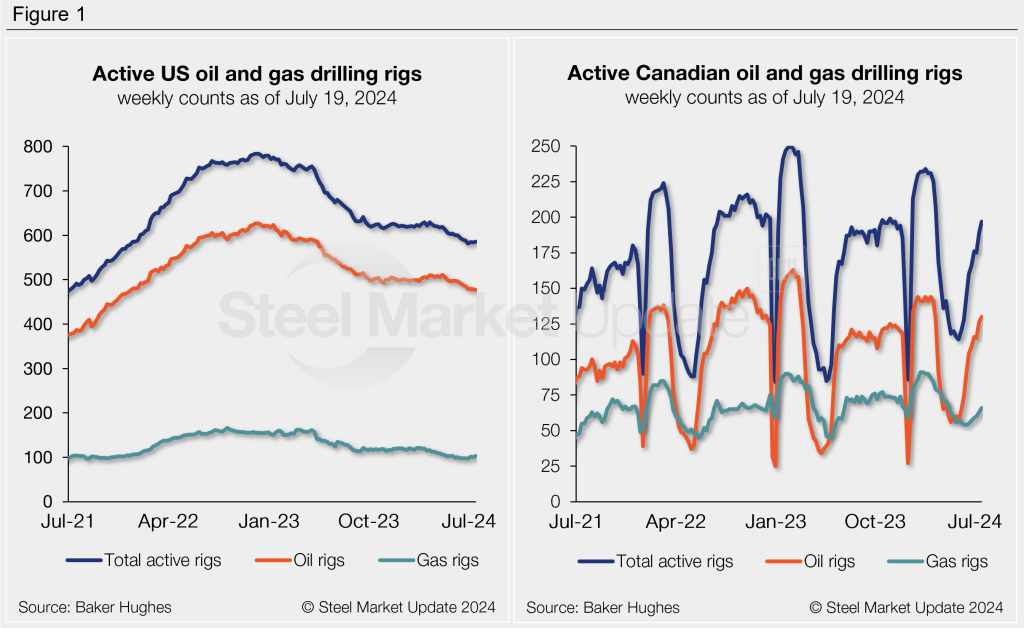Analysis
July 19, 2024
US rig activity edges up, Canada hits 4-month high
Written by Brett Linton
Drilling activity in the US saw a slight uptick last week but continues to hover near multi-year lows, according to the latest data release from Baker Hughes. Meanwhile, Canadian counts rose for the second-consecutive week and are now at a four-month high.
US rigs
Through July 19 figures, the number of active drilling rigs operating in the US increased by two week over week to 586. Oil rigs declined by one to 477, gas rigs rose by three to 103, and miscellaneous rigs held steady at six.
There were 83 fewer active US rigs compared to the same week last year. The number of active oil rigs is down by 28, gas rigs are down by 53, and miscellaneous rigs are down by two.
Canada rigs
Last week, the number of rigs operating in Canada increased by 8 to 197. Oil rigs rose by four to 130, gas rigs increased by three to 66, and miscellaneous rigs increased to one. This marks the highest Canadian count since mid-March.
Currently, there are 10 more active drilling rigs operating in Canada than there were one year ago. Oil rigs are up by 14, gas rigs are down by five, and miscellaneous rigs are up by one.

International rig count
The international rig count is updated monthly. The total number of active rigs for the month of June rose to 957, up by four from May and down by 10 from levels one year prior.

The Baker Hughes rig count is important to the steel industry because it is a leading indicator of demand for oil country tubular goods (OCTG), a key end market for steel sheet. A rotary rig rotates the drill pipe from the surface to either drill a new well or sidetrack an existing one. For a history of the US and Canadian rig counts, visit the rig count page on our website.







